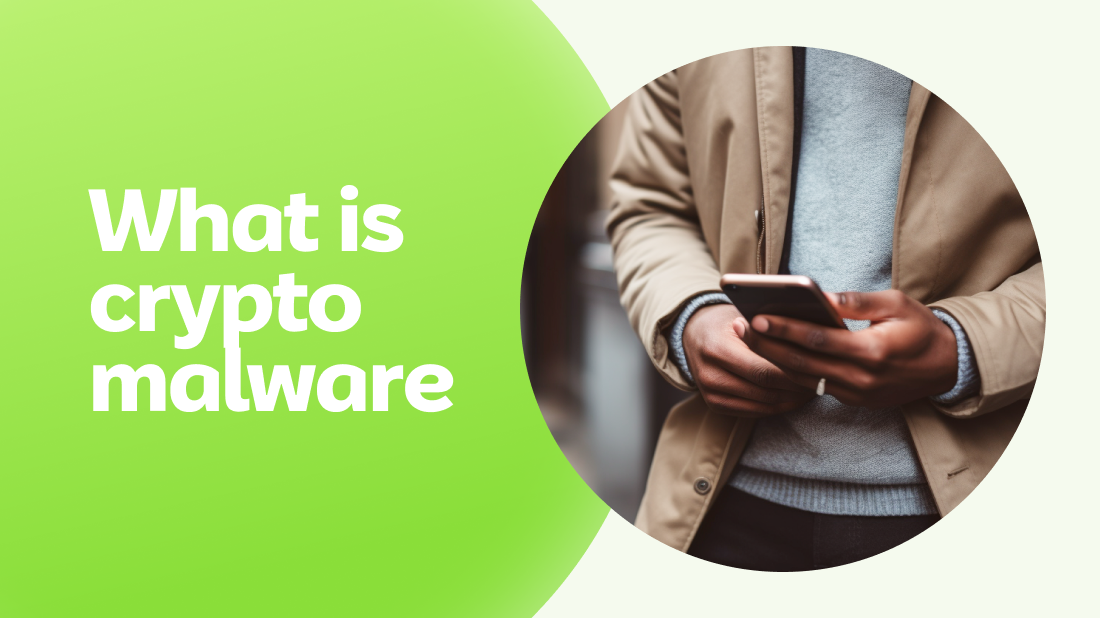What is crypto-malware

Crypto Malware or ransomware is malicious software that encrypts files on a PC or network and requires payment in exchange for a decryption key. Cryptography makes this type of malware very effective and has become a major cyber threat to businesses and individuals.
A brief history of Crypto Malware can be traced back to the 1980s. However, it has evolved significantly over the years, and the profitability of these attacks has skyrocketed with the rise of cryptocurrencies. Understanding and detecting Crypto-malware definition is critical as losing important data can result in significant financial loss, and the reputational damage caused by a successful attack can be difficult to recover.
What is crypto malware? In addition, we will delve into Crypto Malware, how it works, and how to detect it and give tips on prevention and remediation. By taking a proactive approach to cybersecurity, individuals and businesses can protect themselves from the devastating effects of Cryptomalware attacks.
Introduction to Crypto Malware
Crypto mining malware infects a computer to use its processing power to mine cryptocurrencies without authorization.
Understanding Crypto Malware and Its Impact on the Crypto Community
Once a computer is infected, this type of malware can go unnoticed for a long time because it is designed to run unnoticed.
Common Infection Vectors and Distribution Methods of Crypto Malware
One of the signs of infection with encryption malware is the slow operation of the infected computer. In some extreme cases, malware can completely block the operation of the infected computer due to the complete depletion of the resources of this PC.
Risks Associated with Crypto Malware: Financial Losses and Data Breaches
Crypto mining malware can affect desktop computers, laptops, mobile phones, and Internet of Things (IoT) devices.
To illustrate how such malware works, we will briefly discuss one type of malware, WannaMine. It uses an infected computer to generate the Monero cryptocurrency. WannaMine uses the EternalBlue hack tool.
It was originally developed by the US National Security Agency (NSA) but later served as the basis for various malicious applications, including the infamous WannaCry. Cryptocurrency generated through WannaMine is added to the digital wallet of scammers.
Over 500 million Internet users are estimated to be mining cryptocurrencies on their computing devices without knowing it.
Types and Characteristics of Crypto Malware
Here are the different types of Cryptomalware:
- File Encryption Ransomware: This is the most common type of cryptographic malware that encrypts files on the victim's computer or network.
- Screen-Locking Ransomware: This type of Cryptomalware completely blocks the victim's access to their computer or device.
- Mobile ransomware: Mobile ransomware targets mobile devices such as smartphones and tablets.
- Master Boot Record (MBR) ransomware: MBR ransomware infects the MBR of the victim's computer, preventing the computer from booting and rendering it unusable.
- RaaS (Ransomware as a Service): RaaS is a subscription-based model where cybercriminals can rent or buy a ready-made ransomware suite to carry out attacks.
- Hybrid ransomware: Hybrid ransomware combines ransomware, file encryption, and screen lock to make the attack more effective.
- Doxware: Also known as a leak, this type of ransomware encrypts files and threatens to release sensitive data if a ransom is not paid.
- Locker ransomware: Locker ransomware blocks a victim's access to a computer or device, but unlike screen lock ransomware, it does not encrypt files.
Prevention and Mitigation of Crypto Malware Attacks
It is essential to hack Crypto-malware so that users' systems and networks are protected from damage. Here are some of the best crypto-malware prevention cases:
Update software and systems regularly
Keeping software and systems up to date with the latest patches and security updates to prevent Crypto Malware attacks. This helps fix problems that could be exploited by theft.
Antivirus and Anti-Malware Solutions for Crypto Users
Antivirus and antimalware software can help find and destroy Crypto malware. Make sure that a report is published on the results of the investigation.
Be careful with links and email attachments
Almost always email attachments or links to distribute crypto-malware. Do not click on links or download files from emails or websites that you do not know about.
Use strong passwords and multi-factor authentication
Strong password schemes and multi-factor authentication prevent people from entering systems and networks without permission. Use different complex passwords for each account, and don't hack the same password for multiple accounts.
Back up your data frequently
It is essential to back up your data to avoid data loss during a Crypto Malware breach. Ensure the backups are secure and not connected to the network or system; the backups are in place.
Summary
What is crypto malware? Crypto-malware definition is a type of cryptocurrency malware that encrypts its victim's files and demands a ransom to get a key to unlock the files. It can enter the device system in many ways, such as through email attachments, infected websites, or malicious software downloads. Crypto Malware attacks can cause a lot of damage. Therefore, people and businesses need to know how to recognize them, stop them and understand how they work. When attacked by crypto-malware, it is essential to have an effective recovery plan and take steps to isolate infected systems, find out what damage was done and how severe it is, restore data and systems from backups, and check and update the security system measures.
In conclusion, consumers and organizations become vulnerable to cryptocurrency malware attacks. By being aware of the risks and taking strong security measures, we can protect ourselves and our businesses from the dire consequences of these attacks. Always be careful when opening email attachments or downloading software from the Internet, and ensure your software is up to date.












